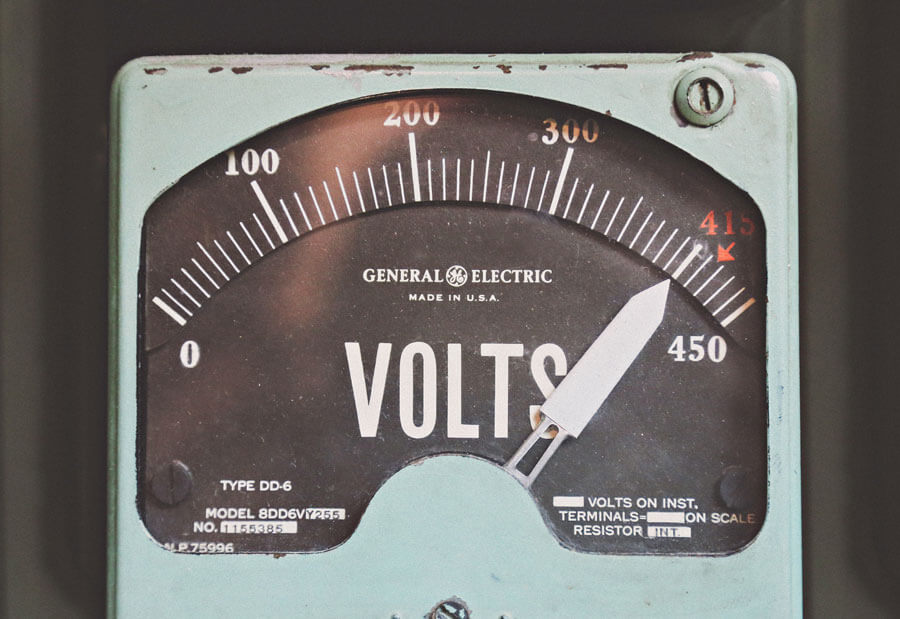Electric shock injuries in pets can be fatal. However, the majority of electric shock injuries can be avoided with a few preventative measures.
Whether a pet in your care has suffered an electric shock or you are discussing the matter with a client, knowing how to prevent such injuries is important. Likewise, it’s essential to know what action to take if an animal sustains an electric shock injury.

Image source: Andrew Leu on Unsplash
Preventing electric shock injuries in pets
Prevention is always better than cure. As such, educating clients and pet owners on ways in which to stop electric shock accidents from occurring in the first place is vital.
Firstly, it’s important to recognise the fact that electric sockets and outlets, as well as power lines and live cables are serious hazards — particularly for unsuspecting pets.
To avoid electric shock injuries when outdoors with a pet, you can advise pet owners of the following points.
- Manoeuvre around metal
Recommend they avoid walking over metal grating, manhole covers and the like. After all, it’s better to be safe than sorry!
- Keep watch
Try to discourage dogs from urinating on metal object, including lampposts. This is where stray electricity could strike.
- Use the leash
If an owner suspects their dog has suffered an electric shock they should use the leash to pull the animal away. Not only could the dog become aggressive and bite, reaching down to touch the dog with their hands could cause the owner to get shocked.
If the leash is made of conductive material, the owner can use a piece of clothing.

Image source: (left) allison christine, (right) Alvan Nee | Unsplash
To avoid electric shock injuries in pets that are indoors, you can advise pet owners of the following action points.
- Keep cables out of reach
Suggest using a cable organisation system to make sure that cables are off the floor and out of the way. Adhesive-backed cable clips can be used to secure cords and wires to higher surfaces to help avoid harm. Also, metal sleeves can be used to shield cables and keep pets from biting the cables.
- Train pets well
Positive reinforcement training can be used to help train pets to avoid wires and cables.
- Watch out for exposed wires
Remind pet owners to keep a close eye out for exposed wires and cables when dog-proofing their home. Suggest they do a check every few months to make sure that no wires are hanging down or within their pet’s reach.

Image source: Jesse Schoff on Unsplash
Electric shock injuries in pets — what to do
Sometimes, despite all precaution measures, accidents happen. Unfortunately, electric shock injuries can be very serious.
Signs of an electrical injury include burns to the mouth and hair, as well as seizures. Other symptoms include:
- Fast breathing
- Difficulty breathing
- Blue-tinged skin
- Tremors
- Physical collapse
If a pet suffers from an electric shock the first step should be to turn off the power (if at home).
Check to see if the animal is still breathing. If not, CPR can be performed. (Check out how to perform CPR on a pet here.) To address shock or a seizure, pet owners can place a small towel over the dog’s face to help shut out light and noise and calm the animal. Advise taking the dog to the local vet for a thorough check up.
If the accident happened in a public space, the local authorities should be alerted.
While no pet owner wants to think about their fur baby suffering an electric shock injury, it’s important they are aware of the dangers. Additionally, it’s essential they know what action to take should this ever occur. This way they can act fast to help give their dog the best chance of a full recovery.
If you enjoyed reading this post, you might like to check out these related posts:
Latest posts by Liz Walden (see all)
- Pet health: Medicinal cannabis for pets - December 27, 2021
- What pet business insurance do I need? - November 17, 2021
- Pet sitters: how to take time off - November 15, 2021










Leave A Comment